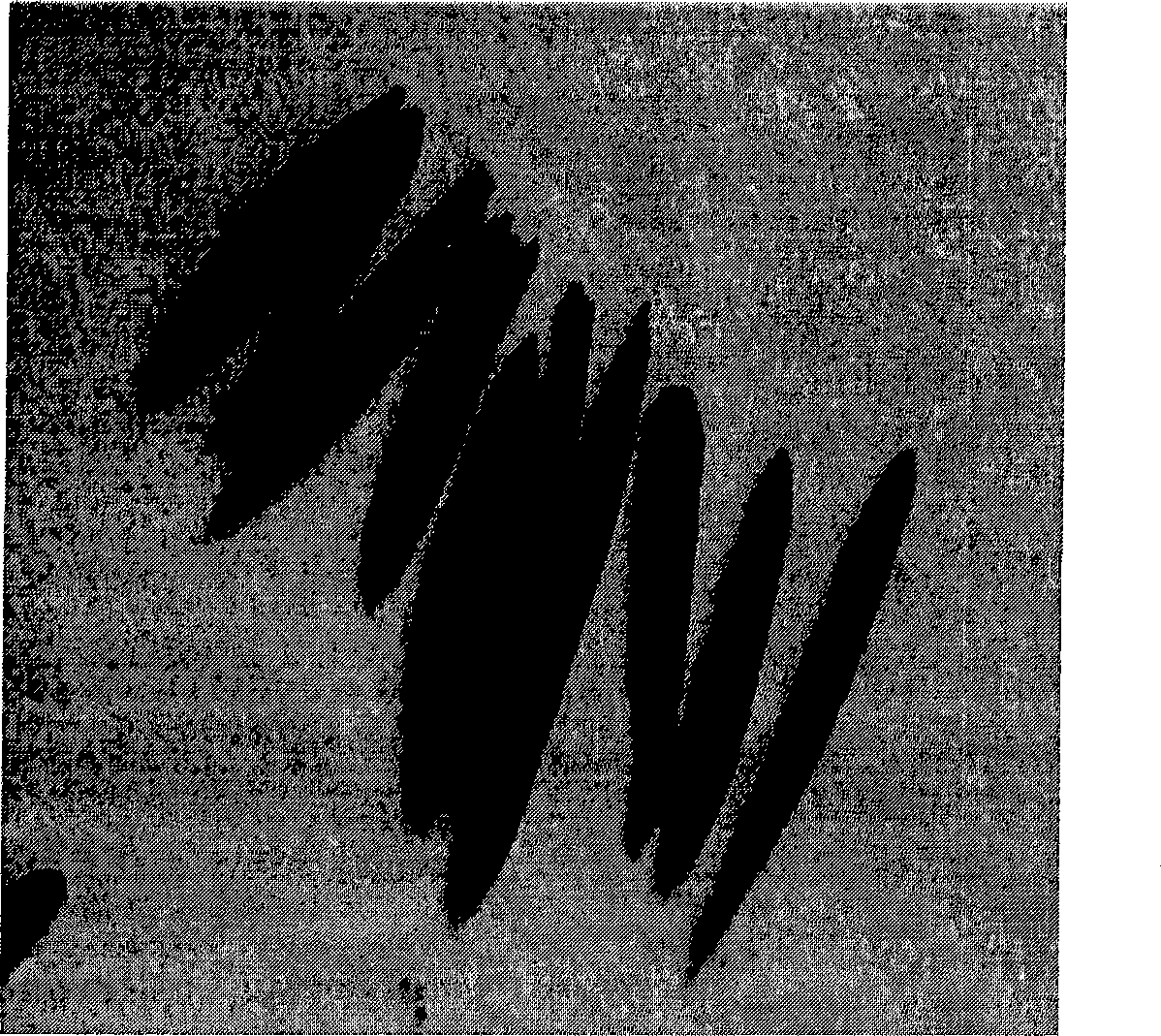Method for identifying bentgrass nematode by real time fluorescent PCR technology
A technical identification and real-time fluorescence technology, which is applied in the field of biological identification, can solve the problems of long identification time, complicated procedures, and difficulties in identifying the nematodes bentgrass, so as to speed up the quarantine, improve the detection level, and promote the quarantine of nematodes. Effect
- Summary
- Abstract
- Description
- Claims
- Application Information
AI Technical Summary
Problems solved by technology
Method used
Image
Examples
Embodiment 1
[0077] Take the worms in a sample to be tested, use a picking needle to pick several live larvae from the sample one by one, wash them in deionized water for 3 times, and set aside. Add 2 μl deionized water to a clean glass slide, pick a washed nematode, cut the nematode into 3 sections with a scalpel, suck it into a 200 μl Eppendorf tube, and wash the scalpel and slide with 6 μl deionized water Finally, suck water into the same Eppendorf tube; add 1.0 μl of 10-fold PCR buffer and 1.0 μl of proteinase K, and put it into an ultra-low temperature refrigerator—70°C for 20 minutes. Take out the frozen nematodes, quickly put them into a PCR instrument or a water bath, and incubate at 65°C for 1 to 2 hours, then place the Eppendorf tube in a PCR instrument or a water bath, and incubate at 95°C for 10 minutes to lose proteinase K. active. Make 10 μl of DNA template.
[0078] Perform fluorescent PCR detection on the sample DNA template, and the composition ratio of each component in...
Embodiment 2
[0111] The worm body in a certain sample to be tested is taken, and the preparation method of the worm body DNA template is the same as in Example 1.
[0112] The DNA template of the sample is detected by fluorescent PCR, and the composition ratio of each component in the PCR reaction system and the fluorescent PCR amplification procedure are the same as those in Example 1. Similarly, 1 μL of the reporter plasmid was also tested by fluorescent PCR to prove the validity of the test. The constituent ratios of the components in the PCR reaction system used to detect the plasmid, the PCR amplification program and the sample detection program in this implementation are the same as in Example 1.
[0113] The detection result is the sample amplification result, which is automatically analyzed by the instrument, and an obvious amplification curve can be found, such as Figure 4 Shown in curve 2. The test results showed that the sample contained Nematode bentgrass. The amplification...
Embodiment 3
[0116] The worm body in a certain sample to be tested is taken, and the preparation method of the worm body DNA template is the same as in Example 1.
[0117] The DNA template of the sample is detected by fluorescent PCR, and the composition ratio of each component in the PCR reaction system and the fluorescent PCR amplification procedure are the same as those in Example 1. Similarly, 1 μL of the reporter plasmid was also tested by fluorescent PCR to prove the validity of the test. The constituent ratios of the components in the PCR reaction system used to detect the plasmid, the PCR amplification program and the sample detection program in this implementation are the same as in Example 1.
[0118] The test result is the sample amplification result, which is automatically analyzed by the instrument, and no amplification curve is found. The test results showed that the sample did not contain Nematode bentgrass. The amplification results of the reporter plasmid are automatical...
PUM
 Login to View More
Login to View More Abstract
Description
Claims
Application Information
 Login to View More
Login to View More - R&D
- Intellectual Property
- Life Sciences
- Materials
- Tech Scout
- Unparalleled Data Quality
- Higher Quality Content
- 60% Fewer Hallucinations
Browse by: Latest US Patents, China's latest patents, Technical Efficacy Thesaurus, Application Domain, Technology Topic, Popular Technical Reports.
© 2025 PatSnap. All rights reserved.Legal|Privacy policy|Modern Slavery Act Transparency Statement|Sitemap|About US| Contact US: help@patsnap.com



